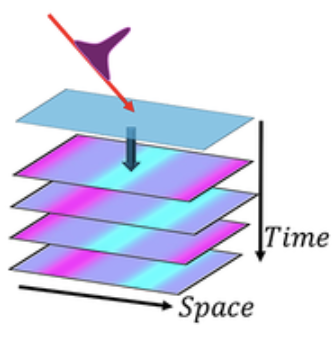Scientists Uncover Novel Laser-Induced Spatio-temporal Order in Solids

In a collaborative research effort, LSU physicist Ahana Chakraborty is involved in the discovery of a novel pathway to manipulate the properties of materials using lasers, proposing an exotic non-equilibrium phase transition to an incommensurate spatio-temporal order in insulators of any symmetry. This breakthrough potentially opens new frontiers in ultrafast non-linear phononics.
Recent advancements in ultrafast optics are enabling the creation of exotic, non-equilibrium phases by driving materials into the non-linear regime and resonantly exciting different degrees of freedom at varying energy scales. These new phases of matter, inaccessible in equilibrium, hold promise for transformative applications in next-generation technologies.
Published as an Editor’s Suggestion in Physical Review Letters, LSU scientists, in collaboration with researchers from Rutgers University, the University of Connecticut, and the University of Wisconsin-Madison, have demonstrated that intense laser pulses can generate a unique type of order—both spatially and temporally—within insulating materials, harnessing the interplay of nonlinearity, parametric resonance, and spatial dispersion. This 'incommensurate order' causes material properties to oscillate in patterns unrelated to the underlying crystal structure, creating novel and tunable states of matter out of equilibrium.
“Our work reveals a direct way of generating tunable finite-momentum order with light,” Dr. Ahana Chakraborty explain. “This discovery opens new possibilities for dynamically controlling material properties on ultrafast timescales”. This order is robust against temperature over timescales much longer than the lifetime of the excited modes, making it a promising approach for future ultrafast computing applications. The team predicts these effects could be observed with time-resolved diffraction techniques, marking a significant step toward light-driven control of quantum materials.
Click the link to read the publication: https://journals.aps.org/prl/abstract/10.1103/PhysRevLett.134.066902